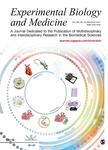版权所有:内蒙古大学图书馆 技术提供:维普资讯• 智图
内蒙古自治区呼和浩特市赛罕区大学西街235号 邮编: 010021

作者机构:Georgetown Univ Med Ctr Lombardi Comprehens Canc Ctr Washington DC 20057 USA Georgetown Univ Med Ctr Dept Pathol Washington DC 20057 USA MedStar Georgetown Univ Hosp Washington DC 20057 USA MedStar Georgetown Transplant Inst Washington DC 20057 USA
出 版 物:《EXPERIMENTAL BIOLOGY AND MEDICINE》 (Exp. Biol. Med.)
年 卷 期:2019年第244卷第11期
页 面:857-864页
核心收录:
学科分类:0710[理学-生物学] 1001[医学-基础医学(可授医学、理学学位)] 07[理学] 09[农学]
主 题:Primary human hepatocytes long-term culture conditional reprogramming
摘 要:Cultivation of primary human hepatocytes (PHHs) often faces obstacles including failure of long-term in vitro culture, weak proliferation ability, rapid loss of liver-specific function and morphology, and tendency of fibrosis. Previous research focused on immortalization methods, such as telomerase and viral, to culture immortalized primary human hepatocytes, which may lose some of the normal properties. However, non-immortalized PHHs often fail to maintain long-term viability and functionality. These highlight the urgent need for developing new culture strategy for PHHs. In the present study, we isolated PHHs from fresh human liver tissues representing different liver diseases and age groups. We used conditional reprogramming, without permanent immortalization, for long-term in vitro primary human hepatocytes cultivation and characterization. For functional characterization, we assessed CYP3A4, 1A1 and 2C9 activities and measured the mRNA expression of albumin, s100a4, krt8, krt18, cyp1a1, cyp3a4, cyp2b6, cyp2c8, cyp2c9, and cyp2d6. Additionally, we compared the DNA fingerprint of the cells against their original liver tissues using short tandem repeat (STR) analysis. We found that PHHs-derived from young patients can survive for more than three months, while the lifespan of primary human hepatocytes derived from adult patients ranges from two to three months, which is longer than most commercial primary hepatocytes. Importantly, the cells at early passages retain strong CYP3A4, 1A1 and 2C9 activities and the DNA fingerprints are identical with their original tissues. Through conditional programming, we achieved, for the first time, a high level of success rate in the long-term in vitro cultivation of primary human hepatocytes-derived patients representing diverse liver disease. Moreover, the conditional programming cell culture technology reported in this paper requires neither co-culture with additive cells, nor complex and expensive components, such as collagen